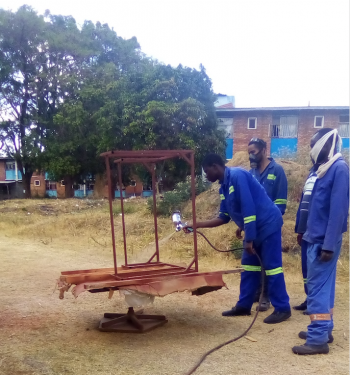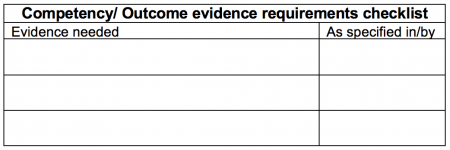CTVSD2/Design/Step1
Picture what competence looks like
Start by making sure you fully understanding of the requirements of the units of competency or outcomes to be assessed. Ask yourself what a competent person at work knows, is able to do, what tasks such a person can perform, under what conditions. How such a person looks like and behaves. If unsure have a conversation with a master craftsperson or industry professional.
When you are clear about the tasks that such a person will perform and manage, the contingencies that might arise, and in what contexts they are likely to apply their skills, you are ready to select an appropriate assessment methodology.
You may want to capture the competency profile you have developed for future reference. It will be particularly useful when developing the judgment statements of performance.
Once you have developed your competency profile and you are clear on all the activities undertaken by a person doing that job, you will be in a better position to identify opportunities to cluster units of competency to reflect actual workplace practices.
Confirming the evidence requirements
Evidence is what is needed to be considered against a unit of competency, to enable confident judgement whether or not a person is competent. In order to decide what evidence needs to be collect, you must be absolutely sure of the competency requirements by examining a number of sources including:
- the elements of the unit(s) of competency, the performance criteria, the performance evidence and knowledge evidence, and the assessment context;
- the dimensions of competency – the task, task management, contingency management and job/role skills;
- the employability skills and attitudes, if relevant;
- the relevant qualifications framework descriptor or assessment rules; and
- related workplace processes, procedures and systems that will help you to contextualise the activity to be assessed. Be sure to include any legislation, health and safety or legal requirements that may need to be considered when conducting the assessment.
Once you have examined/revisited the available information sources, and consulted with relevant industry or workplace people, you should be in a position to list the evidence requirements using the following simple checklist.
Understanding what evidence is required for each outcome is essential to ensure valid judgements, but also to determine whether there is an opportunity to cluster outcomes and integrate assessment using common evidence for assessment decisions.
Now that you are absolutely clear about the standards or outcomes against which you are assessing and the evidence requirements you are ready for the next step.

